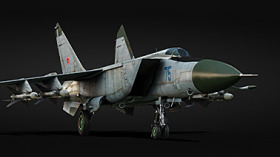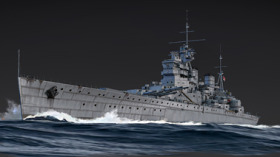
- For PC
- For MAC
- For Linux
- OS: Windows 10 (64 bit)
- Processor: Dual-Core 2.2 GHz
- Memory: 4GB
- Video Card: DirectX 11 level video card: AMD Radeon 77XX / NVIDIA GeForce GTX 660. The minimum supported resolution for the game is 720p.
- Network: Broadband Internet connection
- Hard Drive: 23.1 GB (Minimal client)
- OS: Windows 10/11 (64 bit)
- Processor: Intel Core i5 or Ryzen 5 3600 and better
- Memory: 16 GB and more
- Video Card: DirectX 11 level video card or higher and drivers: Nvidia GeForce 1060 and higher, Radeon RX 570 and higher
- Network: Broadband Internet connection
- Hard Drive: 75.9 GB (Full client)
- OS: Mac OS Big Sur 11.0 or newer
- Processor: Core i5, minimum 2.2GHz (Intel Xeon is not supported)
- Memory: 6 GB
- Video Card: Intel Iris Pro 5200 (Mac), or analog from AMD/Nvidia for Mac. Minimum supported resolution for the game is 720p with Metal support.
- Network: Broadband Internet connection
- Hard Drive: 22.1 GB (Minimal client)
- OS: Mac OS Big Sur 11.0 or newer
- Processor: Core i7 (Intel Xeon is not supported)
- Memory: 8 GB
- Video Card: Radeon Vega II or higher with Metal support.
- Network: Broadband Internet connection
- Hard Drive: 62.2 GB (Full client)
- OS: Most modern 64bit Linux distributions
- Processor: Dual-Core 2.4 GHz
- Memory: 4 GB
- Video Card: NVIDIA 660 with latest proprietary drivers (not older than 6 months) / similar AMD with latest proprietary drivers (not older than 6 months; the minimum supported resolution for the game is 720p) with Vulkan support.
- Network: Broadband Internet connection
- Hard Drive: 22.1 GB (Minimal client)
- OS: Ubuntu 20.04 64bit
- Processor: Intel Core i7
- Memory: 16 GB
- Video Card: NVIDIA 1060 with latest proprietary drivers (not older than 6 months) / similar AMD (Radeon RX 570) with latest proprietary drivers (not older than 6 months) with Vulkan support.
- Network: Broadband Internet connection
- Hard Drive: 62.2 GB (Full client)
Try the ST-1 now in the 'March to Victory' event! Enjoying it?
Like and share its entries on Facebook, Twitter and Google+!

Two 'Object 104' (later called ST-1) participating in field training exercises.
Picture taken shortly after the first prototype trials.
Development of the ST-1 started even before the start of World War II. The first world war, which was also called “the trench war”, showed an inefficiency in the usual infantry breakthrough and required the creation of an absolutely new type of ground vehicle - something that could cross destroyed roads and ground torn apart from explosions. This is what the ST-1 was about - the first and the only model of a walking tank.
 |
| Blueprint of the Object 104 (ST-1) |
In April 1937, Armour Command of the Red Army sent the military operational requirements to Factory #184, these were the requirements for the development of “an armoured machine of a new type” with a maximum mass of 50 tons, protected by at least 60mm of armour and the option to install different weapon types. Depending on the task of the battle machine, a 107mm cannon, a 122mm howitzer or 152mm howitzer could be mounted. Additional weapons were a 45mm cannon, a high-calibre AA machine gun and a 20mm tank cannon.
In spite of the complexity of the task the construction bureau of the factory managed to cope with the new design and the new battle machine (object 104 in the factory numeration) reached the factory testing stage which lasted for a year. During this period a considerable number of flaws were detected, these issues were eliminated as the tests proceeded.
Central Archive of the Ministry of Defense of Russian Federation “Head armour command of the Red army Military representative’s report on the execution of order for object 104”:
"6 machines tested on the run. The following defects found:
a) Replacement of the diesel engine and the electrical generator due to overheating and low oil pressure.
b) Overheating of the main clutch mechanism.
c) Unstable operation in the power drives of the side turrets.
d) High temperature in the battle compartment.
e) Unsatisfactory performance of gyro stabilization mechanisms.“
Soviet troops on the offensive, 1941.
In September 1939 after most of the defects had been eliminated, the development prototype obj. 104, (newly designated ST-1) was delivered to Moscow to be shown to members of the Soviet government and Red Army command. The demonstration of the new battle machine highly impressed the Soviet political and military leadership, and therefore it was decided to build a series of machines for operational trials. The new vehicles went through a baptism of fire during the Soviet-Finnish war. ST-1, along with new trial tanks the SMK and the T-100 had been sent to the front. Later, the ST-1 was changed to KV in the documents for disinformation purposes.
 |
| Forced river crossing, ST-1 in action |
Not only did it have an extremely high cross-country ability, the ST-1 also was almost immune to anti-tank hedgehogs and mines. Even more so, thanks to it unique looks, it would spread fear and panic in enemy infantry ranks. 152mm howitzer allowed to destroy concrete pill-boxes with a minimal ammo expenditure. Finnish 37mm cannons could not penetrate the battle compartment’s armour and Molotov cocktails were also useless due the high profile of the machine. The large “dead zone” of the main armament and limited range of vision were the main weaknesses. A successful combat deployment convinced even the most pessimistic military officials of the necessity to put ST-1 into mass production.
According to different sources by June of 1941 from 20 to 30 ST-1’s were built. All of the aforementioned vehicles were deployed in the western military districts but by the beginning of the war, the machines were not fully mastered by the crews - also there was a lack of spare parts for repairs that resulted from a large amount of electrical failures In the course of the near-border battle in summer of 1941, all completed ST-1’s were lost. But some of them were mentioned in German battle reports.
From the report of Wehrmacht’s 14th tank division:
“... For the first time in the Eastern campaign we faced a new type of battle machine, it was hard to miss the complete superiority of a 55 ton walking tank…..”
“...Our 5cm KwK. tank cannon could penetrate the armour only in vulnerable spots and at very close distances (below 200m).”
“...our tanks’ armour cannot stop the 15cm armour piercing shells, and even close detonation of an HE shell often led to penetration of the armour by its fragmentation effect”
“... The existing facts and besides that, the impression felt that Russians know about their armoured walkers’ technical superiority, should be taken into account and thoroughly investigated to avoid the damage that is being done to our armoured troops”
“... fight against Russian armoured walkers and tanks with 8.8cm flak cannons and 10cm tank guns cannot be enough on their own. Both weapon types are cumbersome and in most cases they are already discovered, under fire and destroyed while trying to reach an optimum firing position.”
“...In order to counter Russian heavy tanks and armoured walkers the following detailed recommendations are presented for consideration:
I) To develop assault weapons to fight heavily armoured targets:
II) Besides other modernizations we should progress with the building of the 26 ton tank and use captured and undamaged 55 ton Russian armoured walkers. 1 company of which is required for each tank regiment.
III) We should design a 10 cm self-propelled anti-tank gun. At least 6 of these SPG’s are required for each tank regiment.
IV) Create new shell type with considerably higher armour-piercing capacity.
V) Create a more powerful mine, that can render a 55 ton armoured walker unserviceable. For example, simply our existing mines are not enough…”
 |
| German armoured train with captured ST-1 |
The Germans managed to capture several trial prototypes that were abandoned without fuel and ammunition. Despite the fact that the crews followed the instructions and tried to destroy their machines with hand grenades, the Germans managed to restore several machines in a few years and they took part in incidental skirmishes.
Due to the difficult situation at the front and the military factories’ relocation to the East, a decision had been made not to continue the production of walking tanks and concentrate on less spectacular but more efficient, easy to master and repair vehicles with traditional running gear. 3 pre-production ST-1’s were given to the US due to its technology exchange program. In Autumn of 1941 they were delivered to Aberdeen proving ground and were tested for 1.5 months.
What follows are the excerpts from the reports on the testing of the armoured battle machine of the new ST-1 type:
“1 . Armored Chassis:
A choice of the armor angling for hull plates and turret points to an excellent shell damage withstanding capacity...
2. Armament:
Firepower much higher than any of our own tanks, makes it possible to destroy almost any target on the battlefield, including permanent concrete fortifications. In addition, the additional armament of a 45mm cannon grants a high rate of fire whilst engaging lightly-armored targets. Additional machine guns are reliable, of a very simple design and easy to produce and to instal, there are possibilities of replacing machine guns with equivalent ordinance of our design.
3. Vision and aiming devices:
The aiming devices installed are perfect though the vision devices are not fully sighted, but passable. Overall visibility ranges are good.
4. Powerplant:
The engine is very light for its size, since most of its parts are made from aluminium. Persistence for portability is shown. High fuel and oil consumption rates. Engine cooling is not up to our (US) standards and if it won’t be compensated by the engine design itself, then the engine lifetime would be dramatically reduced. An air startup system could prove additionally effective… This needs to be researched as a reliable additional and alternative method of startup.
OVERALL EVALUATION OF THE ST-1 TANK
The Russian walking tank, a vehicle of new design, difficult for mass production by semiskilled labor. The tank has good operating speeds, slight tractive resistance, insufficient ease of maintenance. Poor engine cooling limits its ability to operate in wide temperature ranges. High fuel and oil consumption. Good startup, reliable engine. Bad air filtration equipment and cooling make the tank maintenance more difficult."
German troops on the march, captured ST-1 in the background.
The developers of War Thunder have been collecting information from archives around the world to create the walking tank in the game. Different parts of the ST-1 - some turret details, for example, were discovered in later projects of some Soviet tanks: the KV-2, the T-26 and also the T-60.







